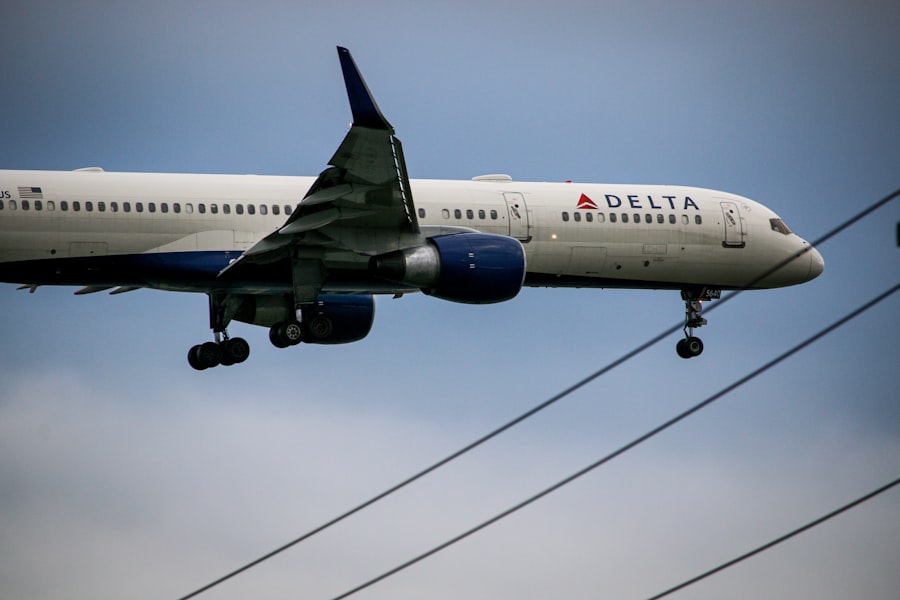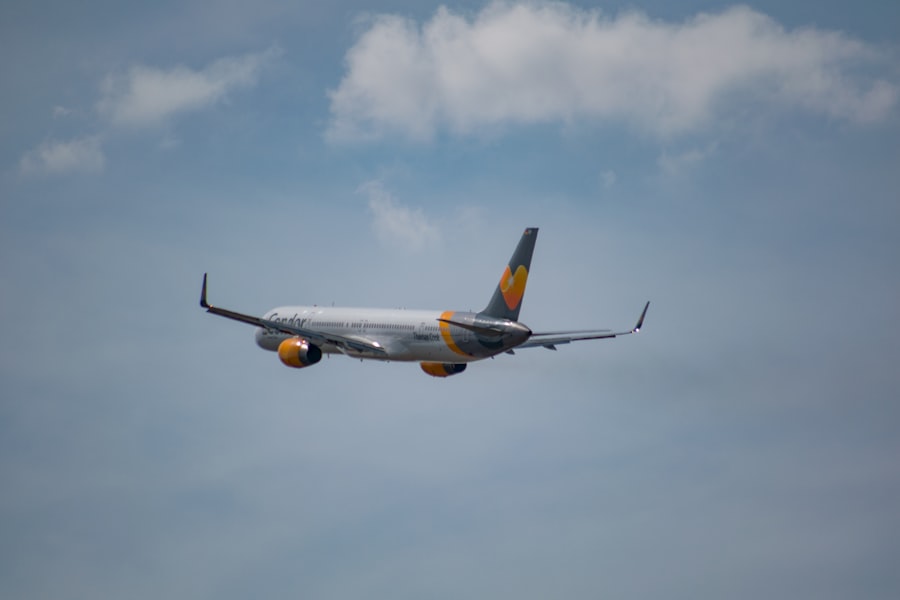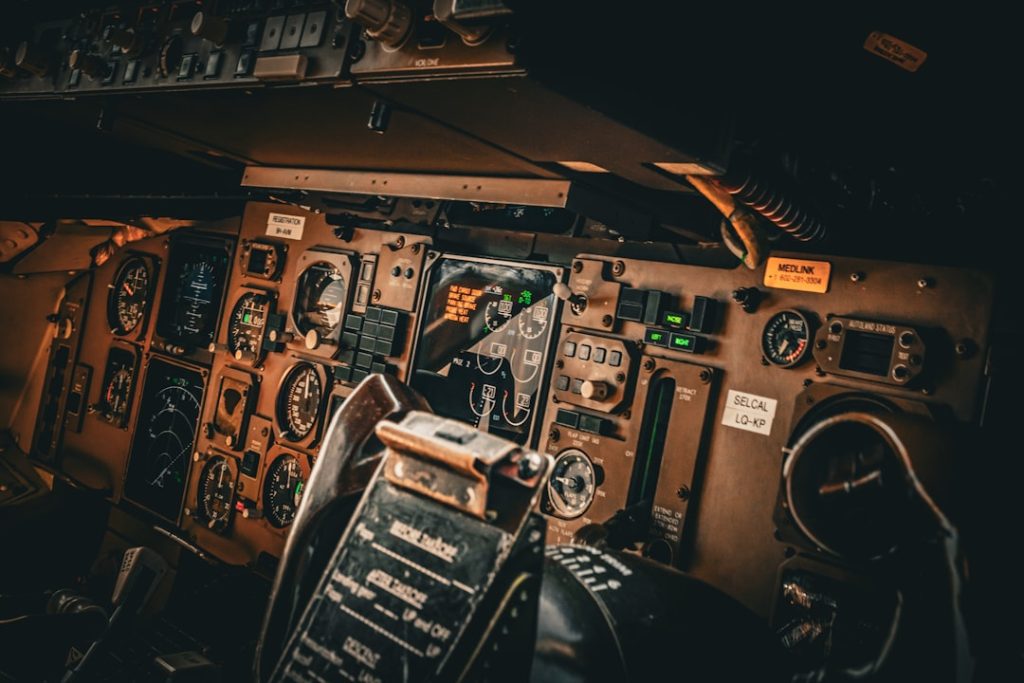The Boeing 757, a narrow-body twin-engine jet airliner, has carved a significant niche in the aviation industry since its introduction in the early 1980s. Designed to serve medium to long-haul routes, the aircraft was developed to meet the growing demand for efficient and reliable air travel. With its first flight occurring on February 19, 1982, and subsequent entry into service in January 1983, the 757 quickly became a favorite among airlines and passengers alike.
Its sleek design, powerful engines, and advanced aerodynamics contributed to its reputation as a versatile workhorse capable of operating in various environments. The aircraft was initially conceived to replace the aging Boeing 727 and to compete with the McDonnell Douglas MD-80 series. The 757 was designed with a focus on fuel efficiency, passenger comfort, and operational flexibility.
With a capacity ranging from 200 to 280 passengers depending on the configuration, it was well-suited for both domestic and international routes. The aircraft’s range of approximately 3,915 nautical miles allowed airlines to connect cities that were previously underserved or not served at all. This combination of features made the Boeing 757 an attractive option for airlines looking to modernize their fleets while providing passengers with a comfortable flying experience.
Key Takeaways
- The Boeing 757 was a popular narrow-body twinjet airliner produced from 1981 to 2004, known for its versatility and long-range capabilities.
- The Boeing 757 had a significant impact on the airline industry, offering a balance of capacity and range that allowed airlines to open new routes and increase efficiency.
- Technological innovations in the Boeing 757 included advanced avionics, improved aerodynamics, and efficient engines, setting new standards for performance and fuel efficiency.
- The environmental impact of the Boeing 757 was a concern due to its fuel consumption, but advancements in engine technology and operational efficiency have helped mitigate its environmental footprint.
- The enduring popularity of the Boeing 757 is evident in its continued use for cargo and charter flights, as well as its reputation for reliability and performance in the aviation industry.
Impact on the Airline Industry
The introduction of the Boeing 757 had a profound impact on the airline industry, reshaping how airlines approached route planning and fleet management. Its ability to operate efficiently on medium-haul routes allowed airlines to expand their networks without the need for larger, more expensive aircraft. This flexibility enabled carriers to tap into new markets and offer more direct flights, ultimately enhancing connectivity for travelers.
Airlines such as American Airlines, Delta Air Lines, and United Airlines quickly adopted the 757 into their fleets, recognizing its potential to drive profitability through lower operating costs. Moreover, the Boeing 757 played a crucial role in the evolution of low-cost carriers. Airlines like Southwest Airlines and JetBlue Airways utilized the aircraft to establish point-to-point service models that disrupted traditional hub-and-spoke systems.
The operational efficiency of the 757 allowed these carriers to offer competitive fares while maintaining profitability. As a result, the aircraft became synonymous with the rise of budget travel in the United States and beyond, democratizing air travel for millions of passengers who previously may not have had access to affordable flight options.
Technological Innovations

The Boeing 757 was not just a product of its time; it was also a showcase of technological advancements that set new standards in commercial aviation. One of its most notable features was its advanced wing design, which incorporated winglets that improved aerodynamic efficiency. These winglets reduced drag during flight, leading to lower fuel consumption and enhanced performance.
The incorporation of advanced materials, such as composite materials in certain components, further contributed to weight reduction and overall efficiency. In addition to its aerodynamic innovations, the Boeing 757 was equipped with state-of-the-art avionics that improved navigation and safety. The aircraft featured a digital flight control system that allowed for more precise handling and reduced pilot workload.
This system was complemented by advanced autopilot capabilities that enhanced operational efficiency during long flights. The introduction of fly-by-wire technology in later models further modernized the cockpit experience, allowing pilots to benefit from improved control and responsiveness.
Environmental Impact
| Category | Metric | Value |
|---|---|---|
| Carbon Emissions | CO2 emissions | 10,000 tons/year |
| Water Usage | Water consumption | 1 million gallons/year |
| Waste Management | Waste produced | 5,000 tons/year |
As concerns about climate change and environmental sustainability have grown over the years, the aviation industry has faced increasing scrutiny regarding its carbon footprint. The Boeing 757, while revolutionary in its time, is not exempt from this discussion. Although it was designed with fuel efficiency in mind, older models of the aircraft are less environmentally friendly compared to newer generations of airliners that utilize advanced technologies to minimize emissions.
The introduction of more fuel-efficient engines in later aircraft models has led to a significant reduction in greenhouse gas emissions per passenger mile. While the Boeing 757’s Pratt & Whitney PW2040 and Rolls-Royce RB211 engines were considered advanced for their time, they do not match the efficiency of modern engines like those found on the Boeing 787 or Airbus A320neo families. As airlines strive to meet stricter environmental regulations and reduce their carbon footprints, many have begun phasing out older aircraft like the 757 in favor of more sustainable options.
Enduring Popularity
Despite its age, the Boeing 757 continues to enjoy enduring popularity among airlines and pilots alike. Its unique combination of range, capacity, and operational flexibility makes it a valuable asset for carriers operating both domestic and international routes. Many airlines have opted to retain their 757 fleets due to their reliability and performance characteristics.
For instance, Delta Air Lines has maintained a significant number of 757s in its fleet for transcontinental flights as well as routes to Latin America. Pilots also appreciate flying the Boeing 757 for its handling characteristics and performance capabilities. The aircraft’s responsive controls and robust design make it a favorite among those who value an engaging flying experience.
Additionally, the simplicity of its systems allows for easier maintenance and operation compared to more complex modern aircraft. This combination of factors has contributed to a loyal following among both airline operators and flight crews.
Legacy in Aviation History

The legacy of the Boeing 757 is firmly established within aviation history as one of the most successful commercial jetliners ever produced. With over 1,050 units delivered during its production run from 1981 to 2004, it has left an indelible mark on air travel. The aircraft’s versatility has allowed it to serve various roles beyond passenger transport, including cargo operations and military applications.
Its adaptability has made it a staple in many airline fleets around the world. Moreover, the Boeing 757 has influenced subsequent aircraft designs by setting benchmarks for efficiency and performance. Its success prompted manufacturers like Airbus to develop competing models that would eventually lead to innovations in aerodynamics and engine technology across the industry.
The lessons learned from the design and operation of the 757 continue to inform modern aircraft development, ensuring that its impact will be felt for generations to come.
Future of the Boeing 757
As airlines navigate an evolving landscape marked by technological advancements and environmental considerations, the future of the Boeing 757 remains uncertain yet intriguing. While many carriers have begun retiring older models in favor of newer aircraft with improved fuel efficiency and lower emissions, there is still a niche market for the 757 that may prolong its operational life. Some airlines are exploring options for retrofitting existing fleets with more efficient engines or modifying them for cargo operations.
Additionally, as air travel demand continues to rebound post-pandemic, there may be opportunities for select airlines to utilize their existing 757 fleets on routes where capacity is needed but larger aircraft are not economically viable. The aircraft’s ability to operate from shorter runways also opens up possibilities for regional service in underserved markets. While it may not be at the forefront of new aviation technology, the Boeing 757’s legacy ensures that it will remain relevant in discussions about fleet composition and operational strategy for years to come.
The Lasting Influence
The Boeing 757 stands as a testament to innovation in aviation design and engineering. Its impact on the airline industry is profound, having reshaped route structures and operational strategies while influencing subsequent generations of aircraft development. As airlines continue to adapt to changing market dynamics and environmental challenges, the legacy of the Boeing 757 will endure as a symbol of efficiency and versatility in commercial aviation.
While newer aircraft may dominate headlines with their cutting-edge technologies and sustainability initiatives, the Boeing 757’s unique attributes ensure that it will always hold a special place in aviation history. Its ability to connect people across vast distances while providing an enjoyable flying experience has solidified its status as an enduring icon in air travel. As we look toward the future of aviation, it is clear that the influence of the Boeing 757 will continue to resonate within the industry for many years to come.


